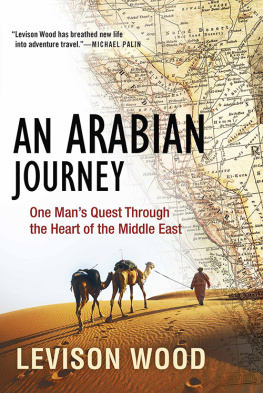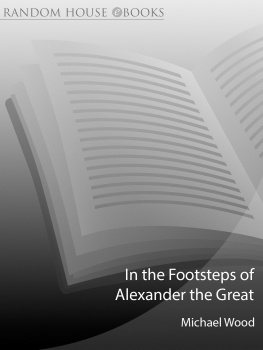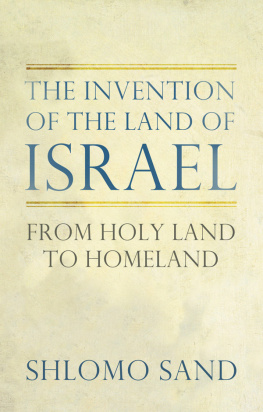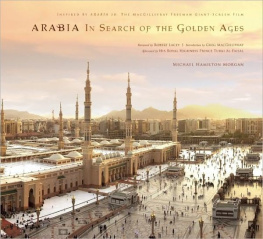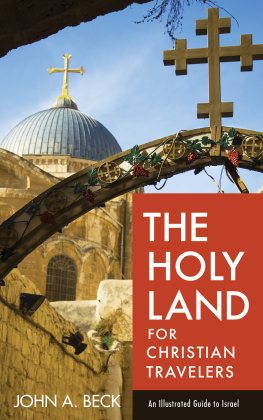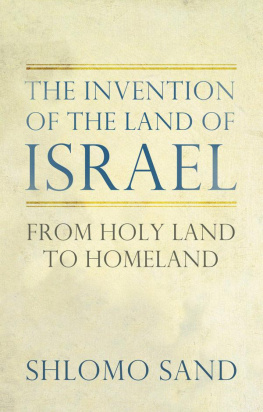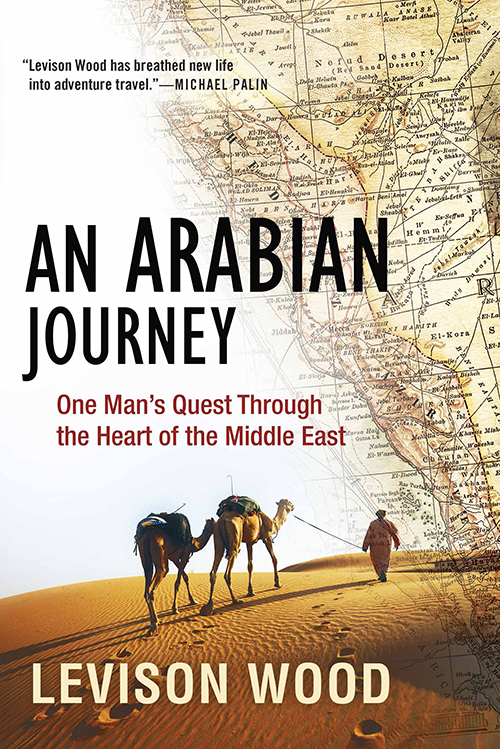Walking the Nile
Walking the Himalayas
Walking the Americas
Eastern Horizons
An Arabian Journey
One Mans Quest Through the
Heart of the Middle East
Levison Wood

Copyright 2018 by Levison Wood
Cover design by Cindy Hernandez and Gretchen Mergenthaler
Cover artwork; map: Encyclopaedia Britannica, Inc.;
Universal Images Group North America LLC/alamy;
photograph of camels Levison Wood
Map copyright 2018 by Neil Gower
All rights reserved. No part of this book may be reproduced in any form or by any electronic or mechanical means, including information storage and retrieval systems, without permission in writing from the publisher, except by a reviewer, who may quote brief passages in a review. Scanning, uploading, and electronic distribution of this book or the facilitation of such without the permission of the publisher is prohibited. Please purchase only authorized electronic editions, and do not participate in or encourage electronic piracy of copyrighted materials. Your support of the authors rights is appreciated. Any member of educational institutions wishing to photocopy part or all of the work for classroom use, or anthology, should send inquiries to Grove Atlantic, 154 West 14th Street, New York, NY 10011 or .
First published in Great Britain as Arabia in 2018 by Hodder
& Stoughton An Hachette UK company
Published simultaneously in Canada
Printed in Canada
First Grove Atlantic hardcover edition: February 2019
Library of Congress Cataloging-in-Publication data is available for this title.
ISBN 978-0-8021-4732-5
eISBN 978-0-8021-4733-2
Atlantic Monthly Press
an imprint of Grove Atlantic
154 West 14th Street
New York, NY 10011
Distributed by Publishers Group West
groveatlantic.com
19 20 21 22 10 9 8 7 6 5 4 3 2 1
In memory of Alex Coutselos
For me, exploration was a personal venture. I did not go to the Arabian desert to collect plants nor to make a map; such things were incidental I went there to find peace in the hardship of desert travel and the company of desert peoples To others my journey would have little importance. It would produce nothing except a rather inaccurate map which no one was ever likely to use. It was a personal experience, and the reward had been a drink of clean, nearly tasteless water. I was content with that.
Wilfred Thesiger, Arabian Sands
The so-called Arab Spring of 2011 had brought about a hope of change in a troubled region. Dictatorships had been toppled and, in some places, democracy flourished. Social media had evoked a new-found love of freedom of expression and for the first time in decades, there appeared to be a shift in the collective consciousness of what it meant to be an Arab. The stereotypes no longer applied, and the young rose up to show the bearded and gold-clad autocrats who really mattered.
But, just a few years later, the dream lay in tatters. Where there had been dictators, there were now terrorists or foreign armies. Wars were still raging at either end of the peninsula in Syria, Yemen and Iraq, raising an infinite number of questions.
Had the initial optimism from the revolutions brought about any change at all? What did the conflict between Sunni and Shia Islam mean for the prospects of peace in the region. Did Saudi Arabia, backed by the West, hold the key to stability in this notorious land, and was Iran really to blame for the volatility in places like Lebanon and Yemen? How is it that seventy years after the creation of a Jewish state in Israel, there is still daily conflict?
More broadly, in times of technological advancement, how has development and rapid change arrived in a place with so much history and tradition. Many people suspect that it was oil that caused the American invasion of Iraq, but with fluctuating economies and a new desire to move away from fossil fuels what does this mean for the future of the Gulf? And indeed, what on earth does being a Bedouin nomad mean in the modern era?
I was interested in discovering more about these and many other topics, and I hope my travels might offer at least some insight to those curious about Arabia and the Arabs, even if they cant provide any definitive answers.
This is a journey through a land steeped in history. It is also mired in controversy, jealousy and tarnished by seemingly endless war. This book, however, doesnt intend to present a comprehensive geo-political narrative, nor does it pretend to cover the vast legacy of this complex and often misunderstood area. Instead, it attempts to showcase a region usually misrepresented.
This account is aimed at those who want to learn a little about Arabian culture in the modern day, and to read my musings on these questions by hearing from the people themselves. I travelled through thirteen countries over the autumn and winter of 201718, meeting men and women (although sadly far fewer of the latter than I would have liked), who told me their stories. I have, of course, tried to be objective when it comes to political allegiances, and yet it is impossible to cover every viewpoint, and every group and organisations agenda.
There are plenty of volumes that will go into great detail about the history of Islam, or the Middle Easts current affairs, and there are yet more tales of voyages and adventures that will describe the Arabia of yesteryear. But only so much can fit within the pages of this book and anyway, travel is a very personal matter, and what follows is simply my snapshot of one moment in time.
Id hope that people reading this will take the title of this book with a pinch of salt. Dont get hung up by the appropriation of the name Arabia. I have no doubt that there may be some who point an accusatory finger at the apparent peddling of outdated orientalist notions. What right has a white man a non-Muslim, and more meddlesome still, an Englishman to prance across the desert in an age of such sensitivity, amid conflicts and strife; let alone to have the nerve to call this land by its ancient name?
I knew from the outset that any journey in the Middle East would be contentious, and simply by undertaking to cross such a loaded region, it would garner criticism. It is exactly for that reason that I thought I should travel across these borders, because despite its controversy, there is nowhere else quite like it.
The truth is there is no Arabia.
Arabia is an imagined construct and always has been: any attempt to define this land will always be met with censure. The Arabs themselves could never agree on what constituted Arabia, so what chance does anyone else have?
These days, when referring to the Arabian Peninsula, geographers include the Gulf States of Kuwait, Bahrain, Qatar, the United Arab Emirates and Oman, as well as Yemen and, of course, the largest country Saudi Arabia. Some would say that Jordan is within the peninsula, others would not. But what about Iraq, Syria and the Holy Lands? Jerusalem, Damascus, Jericho and Baghdad all sit at the heart of the Arabian legacy, so it seems impossible to ignore them in a journey around the most enigmatic place on earth. In the spirit of the Bedouin of old, I have defied these borders and gone on to cross them in spite of their existence.
Until recently, the entire Arabian Peninsula was very much at the mercy of nature, and by that, I mean the desert a landscape so hostile to man that only the hardiest nomads could survive in it. Since history began, Arabia has offered no comfortable welcome to the stranger, or much beyond austerity to its own people, and yet, from this barren land has emerged the root of all civilisation and the commandments of God Himself, giving rise to three great religions and a culture that has spread across the continents.

